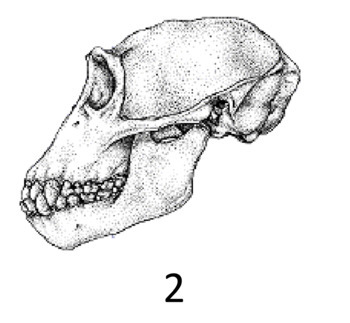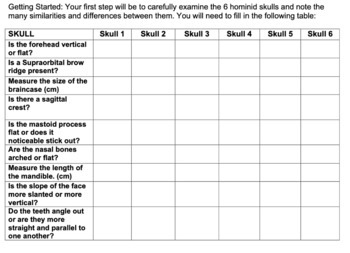Hominid Skull Analysis
- PDF
Description
A fantastic lab for evolution!
To me, evolution is a difficult unit for students to have real lab experiences. You can study natural selection through several investigations, but few allow us to take evidence on patterns found in the past.
This investigation challenges students to evaluate 6 hominid skills through anatomy observation and measurement using a simple ruler allowing patterns in evolution to emerge. The answer key is provided and follow-up questions ask students to outline next steps.
While the lab is 100% ready to be used as-is, this could be the introduction to a larger unit on hominids or evolution as a whole. Students could select species to research and provide background on lifestyle, diet, and geography or dive into discoveries that have been made using modern technology like carbon dating/genetic sequencing.
This is one of my favorite labs for the year!





